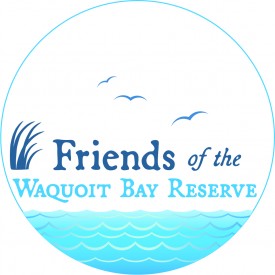Exposure of marine worms to culture of Alexandrium catenella
Project Title: Exposure of marine worms to culture of Alexandrium catenella
Duration: May 2024 – July 2024
Funding Source(s): WHOI
Principal Investigator and contact info:
Lead Investigator / onsite-contact: Donald Anderson / Sylvain Gaillard
Affiliation: Woods Hole Oceanographic Institution
Email: danderson@whoi.edu / sylvain.gaillard@whoi.edu
Project Description: Toxic species of the dinoflagellate genus Alexandrium can produce toxigenic compounds that can accumulate in filter-feeding organisms, including saxitoxins, responsible for paralytic shellfish poisoning (PSP) in humans. While the toxin pathways have been well characterized in several marine organisms, especially marine bivalves, there is little information on animals indirectly consumed by human or directly consumed traditionally as subsistence food by indigenous populations, which are not monitored for saxitoxin contamination and thus pose a risk of PSP in consumers. Several marine worms have been described as prey items of walrus, a top-predator hunted in northern circumpolar regions of Alaska and Russia. We aim to investigate the uptake, accumulation and depuration of saxitoxin by locally sampled marine worms exposed in vitro to an Alaskan isolate of A. catenella. The results of this study will be directly beneficial for native communities, as well as will improve knowledge of saxitoxin transfer through the food-chain, including to local fish and other animals that consume marine worms.
Winter flounder fyke and eDNA monitoring survey
Project Title: Winter flounder fyke and eDNA monitoring survey
Duration: January 2023 to April 2023
Funding Source(s): MA State Funds
Lead Investigator / onsite-contact: John Logan, MA Division of Marine Fisheries
Phone: 508-742-9722
Email: john.logan@mass.gov
Project Description: The Massachusetts Division of Marine Fisheries is carrying out an environmental DNA (eDNA) and fyke net survey to better understand habit use of Waquoit Bay and other Cape Cod estuaries by winter flounder (Pseudopleuronectes americanus). eDNA is genetic material that winter flounder and other aquatic organisms release into the water and can include substances like mucus, skin, scales, blood, and waste. Fyke nets are a type of fish trap that are set off the shoreline to intercept winter flounder traveling though the Bay. We will deploy four fyke nets in Waquoit Bay during the winter and early spring (January-April) when adult winter flounder are presumed to be in Waquoit Bay staging to spawn to estimate the relative abundance of fish across this time period. At the same time, we will collect bottom water samples from throughout the Bay for eDNA analysis. Comparing eDNA results to a more traditional net survey will allow us to better understand how eDNA detections relate to relative abundance of winter flounder in this system.
Life’s a Barrier Beach- for moths, ants, bees and other insects
Project Title: Life’s a Barrier Beach- for moths, ants, bees and other insects.
Date: 5/2019-11/2019
Principal Investigator(s): Mark J. Mello
Affiliations: Lloyd Center for the Environment
Summary: Moths have been under-surveyed Massachusetts’ barrier beach habitats despite its potential to support unique species, including those protected by the sates Endangered Species Act. The goal of this study is to summarize barrier beach/dune use by moths and other insects – primarily beetles, bees and ants in primarily secondary and tertiary dune systems. Data will include records from both published and white paper reports as well as field work described below at two state beaches: Horseneck Beach Reservation and South Cape Beach State Park. A report will be presented to appropriate DCR Supervisors and Waquoit Bay National Estuarine Reserve detailing results, including locations of MESA and other rare species’ habitat locations. As such, this will be an important tool for Park/Reservation managers.
Trematode Parasites of Tritia obsoleta
Project Title: Trematode Parasites of Tritia obsoleta
Date: 7/2018-8/2018
Principal Investigator(s): Lauren Dykman
Affiliations: WHOI
Summary: I am surveying populations of the Eastern Mudsnail (Tritia obsoleta) in Waquoit Bay to locate snails that are parasitized by trematodes. These parasitic worms use three hosts in their life cycle, the first being the Mudsnail. Parasites live in the snail’s gonads and repeatedly shed clones into the water. I am collecting groups of snails and holding them in the lab for 24 hours to see if they shed parasites. I keep infected snails in order to study the behavior of their parasites. All uninfected snails get returned home to Waquoit Bay the following day.
Once parasites are shed from the snail, they have a limited amount of time to find their next host before they die. For the species that infect the Eastern Mudsnail, I want to learn how long they survive outside their host, what is their maximum swimming speed, what distance can they travel, and whether they respond behaviorally to host cues. All these measurements give a better idea of the likelihood of encountering hosts. This work is directed towards understanding population connectivity on both a small scale, and between distant estuaries along the Eastern Seaboard.
NOAA’s Northeast Fisheries Science Center Unmanned Aerial Systems Training
Project Title: NOAA’s Northeast Fisheries Science Center Unmanned Aerial Systems Training
Date: 7/2017-7/2018
Principal Investigator(s): Mike Jech, Kimberly Murray, Lisa Conger, Elizabeth Josephson, Jennifer Johnson
Affiliations: NOAA NMFS, Integrated Statistics
Summary: NOAA’s Northeast Fisheries Science Center (NEFSC) has a small Unmanned Aerial Systems (UAS, aka “drone”) program (four pilots). We fly a multirotor APH-22 built by Aerial Imaging Solutions (http://aerialimagingsolutions.com) that is battery powered and has a flight time of about 15 minutes. The entire system consists of a base station and the APH-22 and requires two personnel to fly. Our field operations focus on marine species such as schooling fish, whales, and seals that can be imaged from the air. UAS technology is rapidly evolving, and we are constantly upgrading our systems with new sensors and platform modifications. These advancements require testing and evaluation of these new features, and improving our team’s capabilities. Our flights on NERR will help maintain our pilots’ flight skills, and further innovate the UAS research done at the NEFSC and NOAA.
Genotype environment associations support a mosaic hybrid zone between two tidal marsh birds
Project Title: Genotype environment associations support a mosaic hybrid zone between two tidal marsh birds.
Date: 2016
Principal Investigators: Walsh, J., Rowe, R. J., Olsen, B. J., Shriver, W. G., & Kovach, A. I. (2016).
Summary: Ecology and Evolution, 6(1), 279-294. http://onlinelibrary.wiley.com/doi/10.1002/ece3.1864/full
Direct and indirect trophic effects of predator depletion on basal trophic levels
Project Title: Direct and indirect trophic effects of predator depletion on basal trophic levels
Date: 2016
Principal Investigator(s): Chen, H., Hagerty, S., Crotty, S.M., & Bertness, M.D.
Abstract: Human population growth and development have heavily degraded coastal ecosystems with cascading impacts across multiple trophic levels. Understanding both the direct and indirect trophic effects of human activities is important for coastal conservation. In New England, recreational overfishing has triggered a regional trophic cascade. Predator depletion releases the herbivorous purple marsh crab from consumer control and leads to overgrazing of marsh cordgrass and salt marsh die‐off. Read full text…Ecology, 97(2), 338-346. http://onlinelibrary.wiley.com/doi/10.1890/15-0900.1/full
Indirect human impacts turn off reciprocal feedbacks and decrease ecosystem resilience
Project Title: Indirect human impacts turn off reciprocal feedbacks and decrease ecosystem resilience
Date: 2015
Principal Investigator(s): Bertness, M.D., Brisson, C.P., & Crotty, S.M.
Summary: Creek bank salt marsh die-off is a conservation problem in New England, driven by predator depletion, which releases herbivores from consumer control. Many marshes, however, have begun to recover from die-off. We examined the hypothesis that the loss of the foundation species Spartina alterniflora has decreased facilitator populations, weakening reciprocal positive plant/animal feedbacks, resilience, and slowing recovery. Read full text…Oecologia, 178(1), 231-237. https://link.springer.com/article/10.1007/s00442-014-3166-5
Sex change in sequentially hermaphroditic slipper limpets
Project Title: Sex change in sequentially hermaphroditic slipper limpets
Lead Investigator: Maryna Lesoway
Affiliation: MBL Whitman Fellow, University of Illinois at Champaign Urbana (home institution)
Funding Source(s): MBL Whitman Fellowship, Fonds de recherche du Québec Nature et Technologie (FRQNT) Postdoctoral Fellowship, NSF
Unlike most animals, slipper limpets change sex from male to female as they grow. This is thought to be a way to increase the reproductive output of these sedentary, filter-feeding snails. However, the developmental mechanisms are poorly known, even though sex change in these animals has been studied for more than a century. Comparing development in the slipper limpets Crepidula fornicata, Crepidula convexa, and Crepidula plana, I will explore the developmental origins of the reproductive system, development of the reproductive organs, and the transition from male to female using developmental techniques including lineage tracing and cell ablation, as well as pharmacological manipulations to induce sex change.
Tracking bird and bat movements using nanotag transmitters and VHF arrays
Lead Investigator: Pam Loring (University of Massachusetts – Amherst)
Funding Source(s): Bureau of Ocean Energy Management, U.S. Fish and Wildlife Service, University of Massachusetts – Amherst, National Science Foundation
Relationship of phenotypic variation and genetic admixture in the Saltmarsh-Nelson’s sparrow hybrid zone
Project Title: Relationship of phenotypic variation and genetic admixture in the Saltmarsh-Nelson’s sparrow hybrid zone
Date: 2015
Principal Investigator(s): Walsh, Jennifer, et al.
Abstract: Hybridization is influential in shaping species’ dynamics and has many evolutionary and conservation implications. Identification of hybrid individuals typically relies on morphological data, but the assumption that hybrids express intermediate traits is not always valid, because of complex patterns of introgression and selection. Read full text…The Auk 132.3: 704-716. https://academic.oup.com/auk/article/132/3/704/5149087
Collaborative Research


